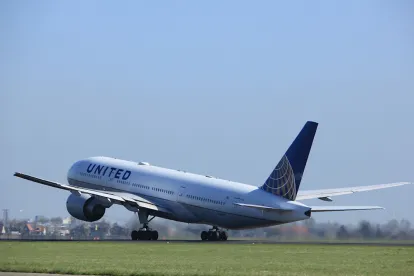Highlights
- Michigan governor signs new executive order that extends “Stay Home” requirements until May 28, allowing some businesses and regions to resume activities, within limitations
- The new order adopts safeguards employers must implement when resuming business activities
- Aviation, similar to a number of other industries, remains subject to critical infrastructure limitations
Private aviation operators across the globe have felt the impact of the COVID-19 outbreak and the resulting stay at home orders and similar laws and orders that disrupted normal activity.
Many states have begun, or are discussing, lifting or easing restrictions that required people to stay home except in limited circumstances.
However, even as restrictions are eased, additional considerations and extra precautions are necessary when resuming aviation operations in an environment where the risk of spreading the virus continues.
Michigan Order and Aviation Workers
The Michigan Stay at Home Order currently in place, Executive Order 2020-92 (EO 2020-92), requires that all people stay at home until May 28 unless they are specifically allowed to leave their homes to engage in designated essential activities (i.e. grocery shopping, exercise, etc.), conduct minimum basic operations, unless they are deemed a critical infrastructure worker, or unless they are a worker in a designated industry allowed to resume business activity. With regard to minimum basic operations and critical infrastructure workers, all activities are suspended except to the extent necessary to protect and sustain life.
The latest Michigan order again incorporates by reference the March 19 guidance from the U.S. Cybersecurity and Infrastructure Security Agency (CISA), excluding any subsequent guidance document released by the CISA. The applicable CISA guidance specifically includes certain aviation-related workers. Aviation and transportation workers who enable, support or facilitate another’s critical infrastructure business activities are also considered critical infrastructure workers under the order.
While the executive order includes aviation and transportation workers and activities that are allowed to continue, it is important to remember that the order limits the activities of the critical workforce and basic minimum activities by allowing only those critical infrastructure workers and activities necessary to protect and sustain life.
Operators who support other businesses should request written confirmation that the flight operations are requested to facilitate basic minimum, essential, or critical infrastructure activities of the business. Employers are still required to designate in writing – via letter, email, public website or other appropriate means – all employees they deem critical in supporting the noted critical infrastructure industries.
There is no bright-line test to determine what constitutes activities necessary to sustain or protect life. Operators should consider and document the particular circumstances that it relies on to determine that its operations are specifically allowed business activities, that they are basic minimum operations, that they are critical infrastructure activities, or that they are to support or facilitate another’s critical infrastructure business activities.
Safety and Security Policies
Operators and corporate flight departments should also consider updating their company safety and security policy in light of the COVID-19 virus. Such a policy may help justify operations if challenged under an executive order.
In preparing or modifying an aviation security policy, one thing to consider is the increased risks encountered if private or corporate aircraft are not used. Any commercial airline travel inherently increases the risk of exposure to COVID-19. At a minimum, commercial airline travel includes visiting public restrooms, security screening, checking baggage or obtaining boarding passes, and other places and activities which subject a person to interaction with other potential carriers of COVID-19 or surfaces infected with COVID-19, which increases the risk of exposure to and infection by COVID-19.
Travel using private or corporate aircraft allows passengers to avoid many public and heavier trafficked places of business and areas within a commercial airport, thereby reducing the risk of exposure to COVID-19. Travel using the corporate aircraft may also limit the duration of the trip, potentially eliminating the need for overnight stays in a hotel and minimizing eating in a restaurant. By reducing the number of public places that the critical executive travelers visit, the potential exposure to COVID-19 is likewise reduced.
In light of these increased risks, operators should consider whether circumstances necessitate a company policy that requires key executives and critical employees to travel only by corporate aircraft to ensure the security, safety, and health of the company executives and employees and their critical importance to the organization.
Essential travel of employees performing critical infrastructure activities or basic minimum operations using the corporate aircraft may also be appropriate. Requiring such individuals to travel during the COVID-19 pandemic using the company aircraft may be reasonable to ensure their continued ability to fulfill their critical obligations and responsibilities to the company and to reduce the risk of exposure to the company’s workforce. It may also be reasonable to extend the requirement for key executives to the executive’s immediate family given the ease of spread of the virus.
Critical infrastructure businesses in the aviation industry should also examine all training requirements necessary to continue their safe and compliant operations. In order that mandatory training can be completed or to increase the safety of flight personnel, it may be necessary or reasonable to modify normal training practices or substitute training methods in order to decrease the risk of exposure to its crews and therefore ensure that critical operations can continue.
Michigan Safeguards Order
The Michigan Stay at Home Order) adopts by reference Executive Order 2020-91, which contains a number of safeguards and requirements for employers allowed to conduct business under the Stay at Home Order, including aviation business. Some of them are:
- Develop a COVID-19 preparedness and response plan, consistent with recommendations in Guidance on Preparing Workplaces for COVID-19, developed by the Occupational Health and Safety Administration and designate one or more worksite supervisors to implement, monitor, and report on the COVID-19 control strategies developed in the plan
- Provide employees with COVID-19 training that covers certain minimum topics
- Provide face coverings and require them to be worn when employees cannot consistently maintain 6 feet of separation in the workspace
- Restrict the number of critical infrastructure workers to no more than those strictly necessary for the business to perform its critical infrastructure functions
- Promote remote work to the fullest extent possible
- Keep at least 6 feet from other employees or patrons to the maximum extent possible
- Increase standards of facility cleaning and disinfecting
- Adopt self-screening protocols to prevent workers from entering the premises if they display symptoms of COVID-19 or have recently come into contact with someone who is known or suspected to have COVID-19
- Implement protocols to clean and disinfect in the event a critical infrastructure worker tests positive for COVID-19
Beyond Michigan
When evaluating a potential upcoming flight, it is critical to understand the orders and restrictions in place at any location where the aircraft, crew members and passengers will travel. Across the country, most states, like Michigan, along with some counties and municipalities, have enacted some variation of Stay at Home order. Some such orders are more restrictive than others. This dynamic and varied landscape of emergency and executive orders that limit or restrict both business and personal activity, coupled with the impact of the COVID-19 virus itself, poses unique challenges for aircraft operators preparing to resume operations.
Operators should consider all executive or emergency orders in place that impact the proposed flight. Review and evaluate any orders in place at all locations where the aircraft will be located. Consider where the orders disallow the flight or place any restrictions on the activities necessary to conduct the flight. Also consider whether the orders impose new requirements on operations, such as the requirement to provide appropriate PPE or implement new disinfecting procedures.
Evaluating Flight Operations
The National Business Aviation Association (NBAA) has published a comprehensive list of risk mitigation procedures, as well as aircraft operational considerations, that operators should review and continually evaluate as business activities resume. Operators may want to modify their Standard Operating Procedures or prepare a supplement that applies during the pandemic. Some best practices include:
- Monitoring current information and recommended guidelines from the Centers for Disease Control and Prevention and applicable state health departments
- Consulting with a medical doctor and/or industry guidance to confirm safe operating practices
- Implementing procedures to decontaminate the aircraft and disinfect commonly touched surfaces as frequently as possible using practices established based on current industry guidance
- Implementing safe working and travel protocols such as maintaining social distance between passengers and crew members as possible
- Ensuring that PPE is available, and carry extra PPE on the aircraft
- Implementing procedures to screen passengers before and during travel
- Having a contingency plan if a passenger or crewmember begins showing COVID-19 symptoms
- Scheduling crews in such a way to minimize potential exposure cross-contamination
- Considering the conditions on the ground at the origin and destination locations






 />i
/>i
